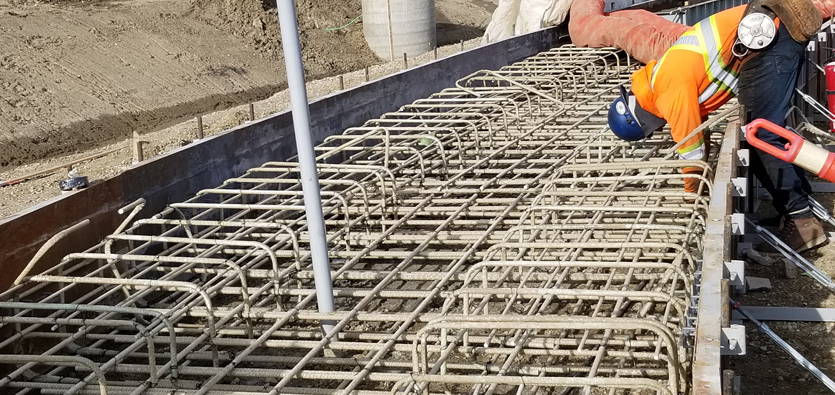
Glass fiber reinforced polymer (GFRP) composites have numerous properties which can be advantageous when used in new construction components and systems. Strong resistance to corrosion, high strength-to-weight ratio, and the ability to customize its final properties make composites a cost-effective alternative to steel. When studying possible applications of GFRP in civil engineering, it is important to consider that design variations are possible for new and rehabilitation applications.
Composite materials (FRP) have been used extensively in technologically advanced industries for more than fifty years. The use of composite materials in the construction industry is growing rapidly. Advantages offered by GFRP are being recognized and utilized to address structural issues and limitations.
GFRP reinforcement
It is an established fact that GFRP is a cost-effective technology providing corrosion-resistant reinforcement. Even though GFRP rebar is lightweight and corrosion-resistant, it is important to build sufficient concrete cover because of constructability, serviceability, and thermal compatibility considerations. Insufficient concrete covering can lead to cracking.
Situations where the use of GFRP is attractive
The application of GFRP concrete reinforcement is especially attractive when the intended concrete structure is susceptible to corrosion and other aggressive chemicals. It is also ideal to use GFRP fiberglass rebar when electromagnetic transparency is a prime concern. Also, it is advisable to use GFRP when concrete is placed temporarily and will be cut through the section.
Taking into account the availability of AASHTO guidelines for truss structures, the use of composite material has gained considerable momentum over the past few years. Heavy construction materials such as steel require large transportation and installation equipment which cause harm to the environment and make it hard for structural engineers to complete a project quickly. Because of the lightweight properties and the on-site assembling ability, GFRP completely outsmarts steel.
New construction applications of GFRP
GFRP can be used for a broad range of new construction applications which include transportation infrastructure, rail LRT, runways, IT and research facilities, mining and tunneling, buildings, and waterside concrete structures such as retaining and sea walls.
Waterside structures such as water treatment facilities and drainage systems must be reinforced with GFRP to protect the concrete against harsh environmental conditions. GFRP-reinforced drains don’t rust as they can withstand tensile stresses from freezing water. Composite drains are used by many states because of their strength and durability. The long-term durability in saltwater provides GFRP a clear advantage over conventional steel.
About TUF-BAR
As a proud member of the American Composites Manufacturers Association (ACMA), TUF-BAR has been striving to produce the highest quality GFRP construction reinforcement products which are designed to build new concrete structures and rehabilitate existing ones. Visit our website for more information!
